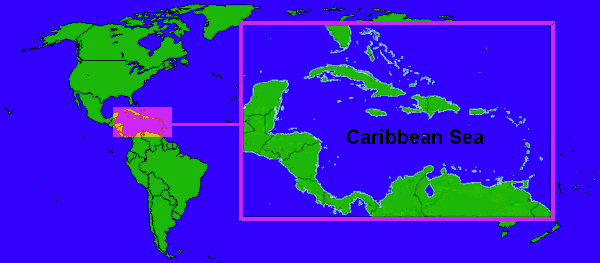
Circle the area on this map

C. The Atlantic hurricane season runs from June 1 through November 30, and it usually peaks in September when the difference between air temperature and sea surface temperatures is the greatest. The world’s oceans have absorbed most of the heat caused by climate change, and warm water is fuel for hurricanes.
D. The Yucatan is a large peninsula in southeast Mexico that borders Belize and Guatemala to the south, the Caribbean to the east, the Gulf of Mexico to the north, and the rest of Mexico to the west. Beryl weakened to a tropical storm as it crossed the Yukatan but began regaining strength as it turned north across the hot water of the gulf.
B. The Great Galveston Hurricane is the deadliest natural disaster in U.S. history, killing between 6,000 and 12,000 people as a huge storm surge and high winds swept across the islands near Houston.
A. The name Caribbean derives from the Caribs, an Indigenous people who were one of the dominant groups in the islands when Europeans first came to the area. Christopher Columbus first recorded the name Caribe to refer to people who called themselves the Kalinago.